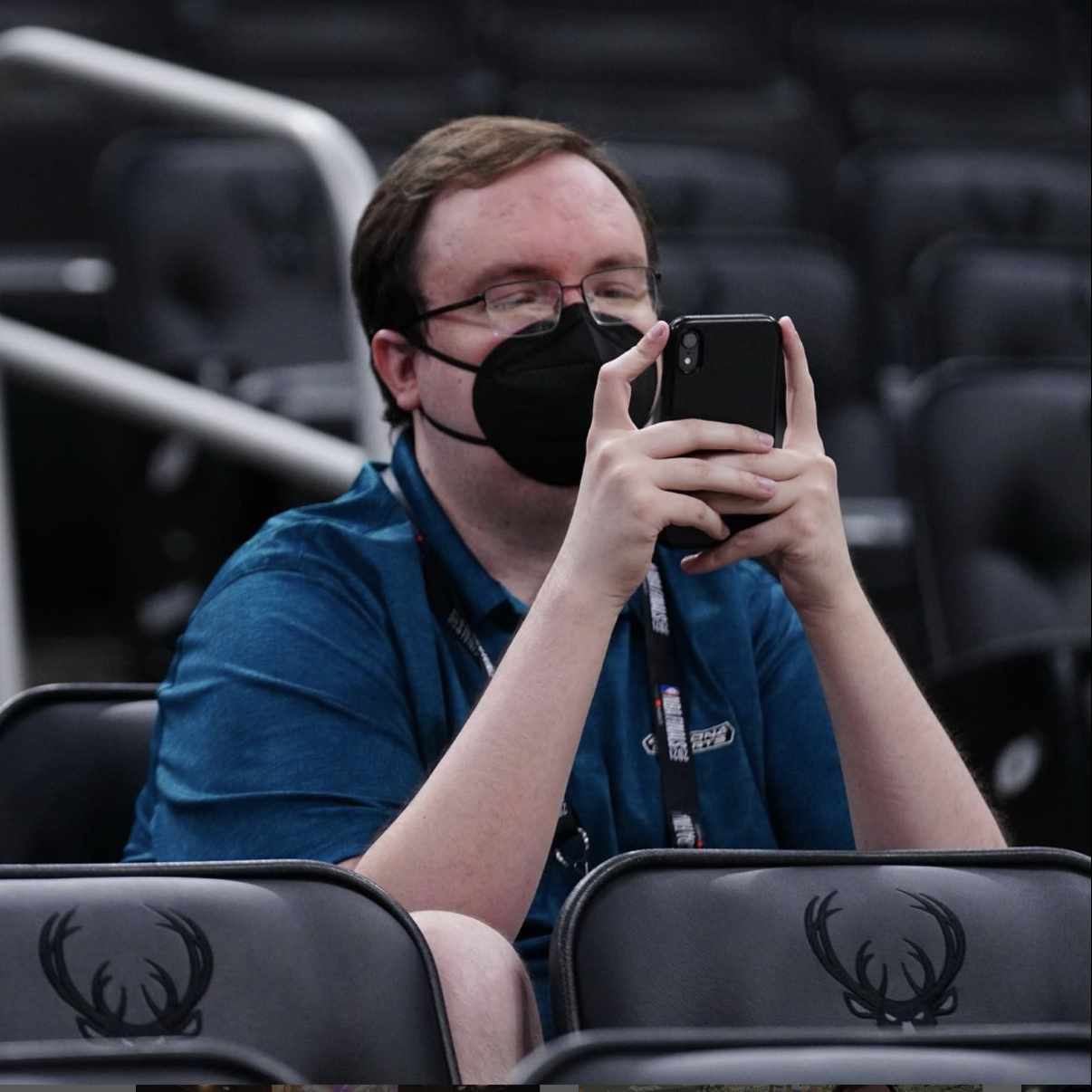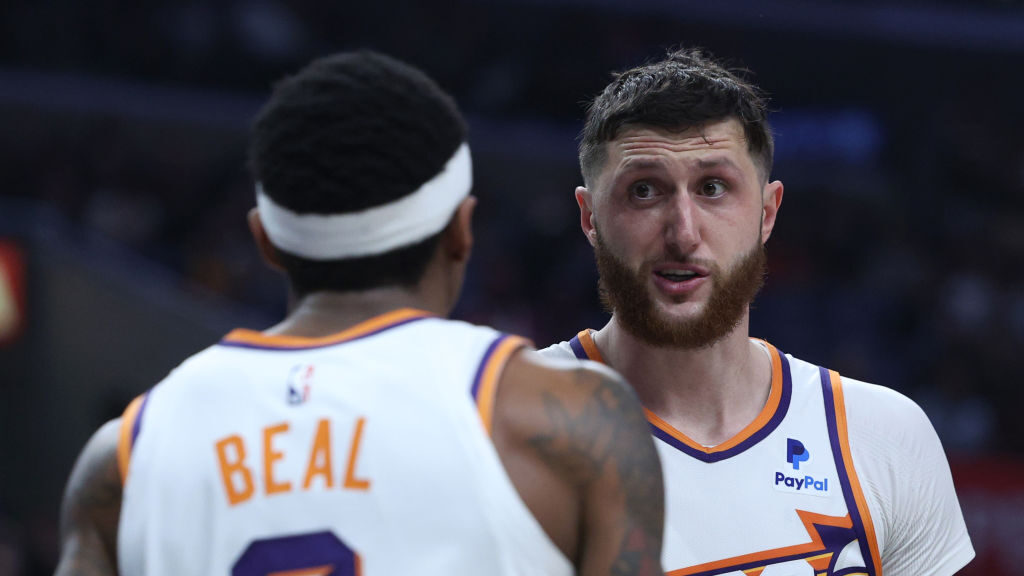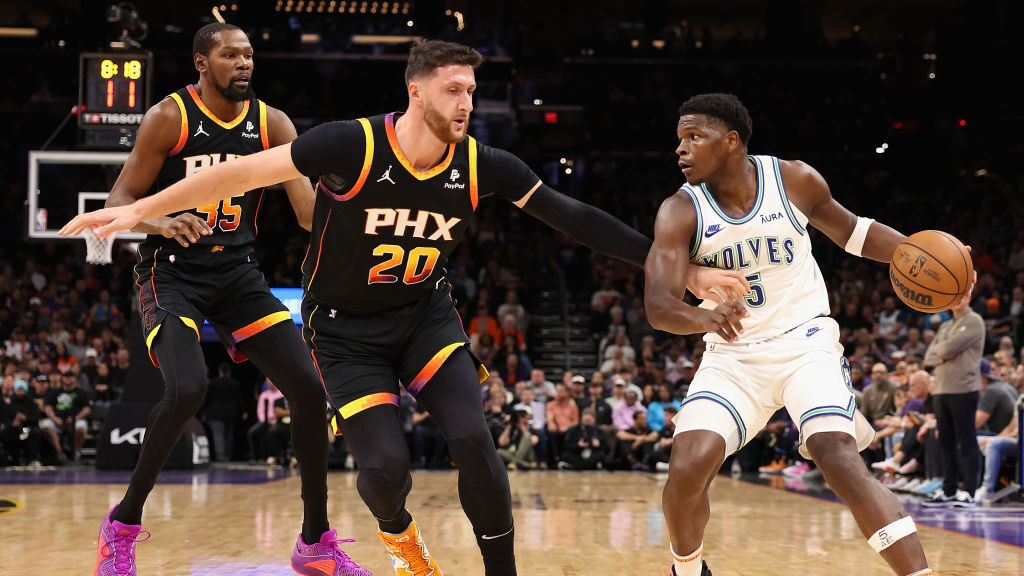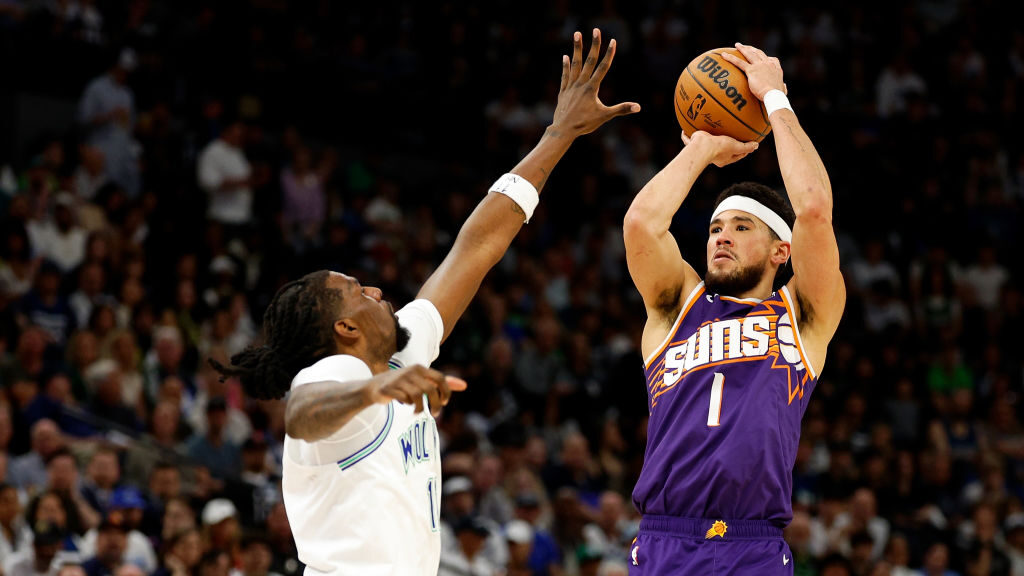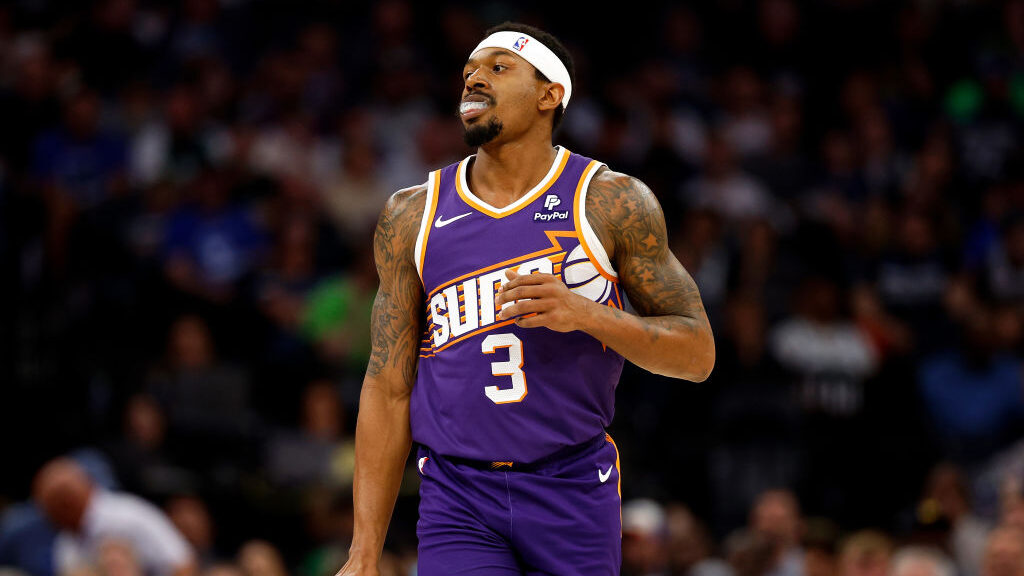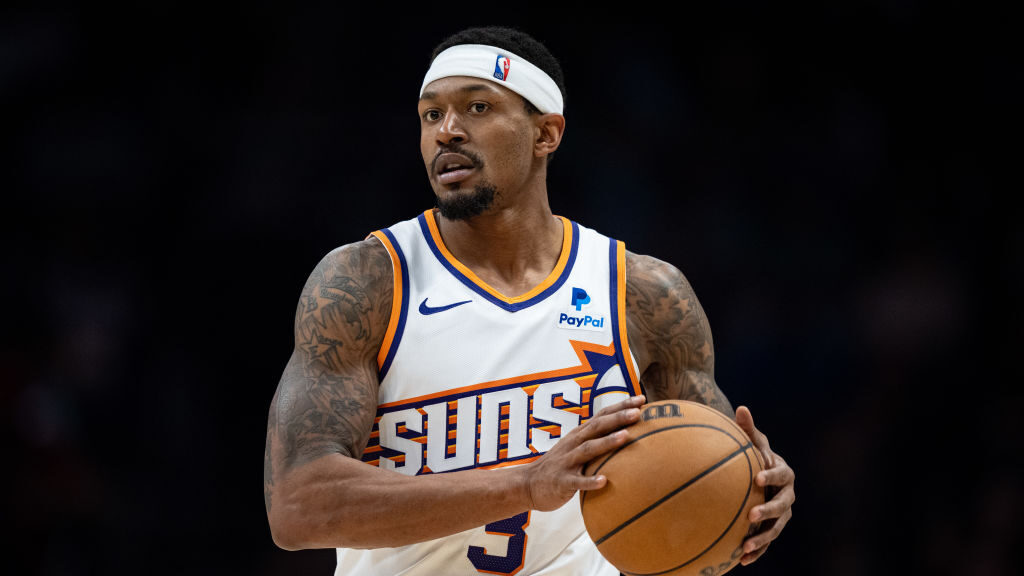Phoenix Suns benefit from shootaround prep, execution of unique gameplans
Nov 18, 2021, 4:22 PM | Updated: 4:31 pm
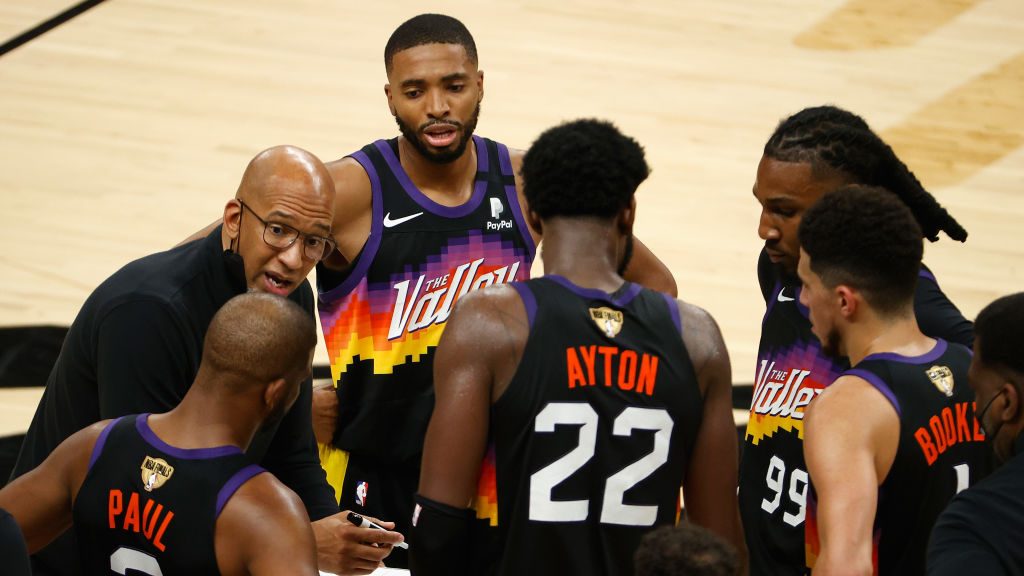
Head coach Monty Williams of the Phoenix Suns talks with Chris Paul #3, Deandre Ayton #22, Mikal Bridges #25, Jae Crowder #99 and Devin Booker #1 in the second half of game five of the NBA Finals against the Milwaukee Bucks at Footprint Center on July 17, 2021 in Phoenix, Arizona. The Bucks defeated the Suns 123-119. (Photo by Christian Petersen/Getty Images)
(Photo by Christian Petersen/Getty Images)
PHOENIX — There’s 4:18 left on the game clock and Dallas Mavericks head coach Jason Kidd calls a timeout.
His team had been able to limit the Phoenix Suns’ offense through three quarters to lead most of Wednesday night’s game, but after 23 Phoenix points in less than eight minutes of the fourth quarter, Dallas now trailed by two and needed something to change.
That change was Kidd employing a 3-2 zone, an occasional switch-up that has worked for the Mavericks this season.
Suns shooting guard Devin Booker likes to call these types of looks “junk defenses,” because they “junk up the game.” AKA, it’s an attempt to throw off an offense in rhythm by slowing it down. It will never work over more than a few minutes. But a few possessions? Sure.
Kidd’s big move, however, backfired.
Despite Dallas scoring on its next four possessions following the timeout, it is not able to make up any ground because the Suns easily dismantled the zone for two wide-open 3-pointers that would be knocked down by Mikal Bridges and Jae Crowder on back-to-back plays before Kidd called it off.
Now, this is the Suns we’re talking about. A team with the Point God Chris Paul and Booker, two terrific playmakers, alongside shooters in a system that thrives off unselfish ball movement. Zone should never work against them and it seemed pretty simple that this was all there was to it.
What this actually was instead, though, was another instance of Phoenix’s shootaround prep for an opponent the morning of a game paying major dividends.
We often think of adjustments to the opposition coming in the playoffs on a game-to-game basis, but the Suns at least have been able to do it in the regular season to the point of executing unique gameplans just for that night.
For the Suns’ fifth game of the season last year in Utah, Phoenix deployed a defense specifically catered around making Jazz center Rudy Gobert more of a playmaker, giving him space to restrict more elsewhere.
Here’s an example of how that looked and forced a turnover, a concept they ran through that morning that led to only 95 points for Utah and a Suns win.
Look for the 2-2 formation and how the TO occurs.
cc: @KellanOlson pic.twitter.com/Y2YGBzcLQp
— David Kevin (@theIVpointplay) January 1, 2021
Suns head coach Monty Williams co-signed on that being a key moment for their group in understanding that’s something they are capable of.
“It’s a risk when you introduce a new defense that, quite frankly, I had never done before. We kind of put it in that particular day. After watching the film, we got together that morning and said, ‘Let’s try it,'” he said with a laugh Thursday.
Crowder agrees and thinks it showed the Suns how much the right approach to gamedays can pay off.
“It definitely started at that game last year and I think we know that gameday really starts there,” he said postgame Wednesday. “It doesn’t start when you get to the arena. Once we got that message to our group, our shootarounds have been beneficial, our shootarounds have had a carryover and I think that’s a sign of a good team.”
The concept of this type of scheming is something we hardly talked about when Phoenix was a young team through most of the last decade, because, as Williams notes, it’s very difficult to execute without seasoned players.
“I think it’s much easier when you have veteran guys,” Williams said. “You’re constantly reminding and not necessarily teaching. There are times where it’s a little easier to show something in the morning before a game and not worry too much about it being implemented later on just because you’ve got older guys who have been in those situations … Our guys do a really good job of transferring the information to the court.”
To go back to Wednesday, here is that pair of 3s against the zone the Suns went over in shootaround.
You’ll see the basic concept here of two Suns players together on the same side of the perimeter. The ball arriving in the corner triggers Dallas into trapping and then recovering from there. The special wrinkle is center Deandre Ayton rolling, which someone has to track, and that puts the zone’s principles in an impossible position.
And 2 pic.twitter.com/sIon9SuwkY
— Kellan Olson (@KellanOlson) November 18, 2021
At the start of both of those possessions, you can see it’s Paul at a very delicate pace, assessing and then making sure everyone is in their spots before getting things started. Bridges and Crowder both shouted him out as the floor general leading that carryover from the morning prep.
And we shouldn’t go without crediting the coaches, where the gameplan originates from in the first place.
Paul, of course, mentioned that first.
“We’ve been like that. We was like that all of last year.” Paul said Thursday of the game-to-game adjustments in shootarounds. “I say it all the time, it’s just one of the reasons why I wanted to come here to Phoenix because we got a coaching staff like that. We never really gonna be caught off-guard by anything because we prepared.”
Williams said when the coaches watch film together, they embrace every suggestion, and that type of freedom getting through to the players too is an important link that makes Phoenix that much better of a team.
“It could be something goofy or unique that we’ve never tried before but if we take it home with us and never even bring it up, how do you know? There are some times where it doesn’t look right and the players can look at you like, ‘What’s going on?’ but that’s OK too,” Williams said.
“I think you have to make those decisions and take those risks to get to where you want to get to … Along the way, I’m OK with looking like a ding dong sometimes with some of my ideas. If a few of those ideas help our team, that’s alright.”

